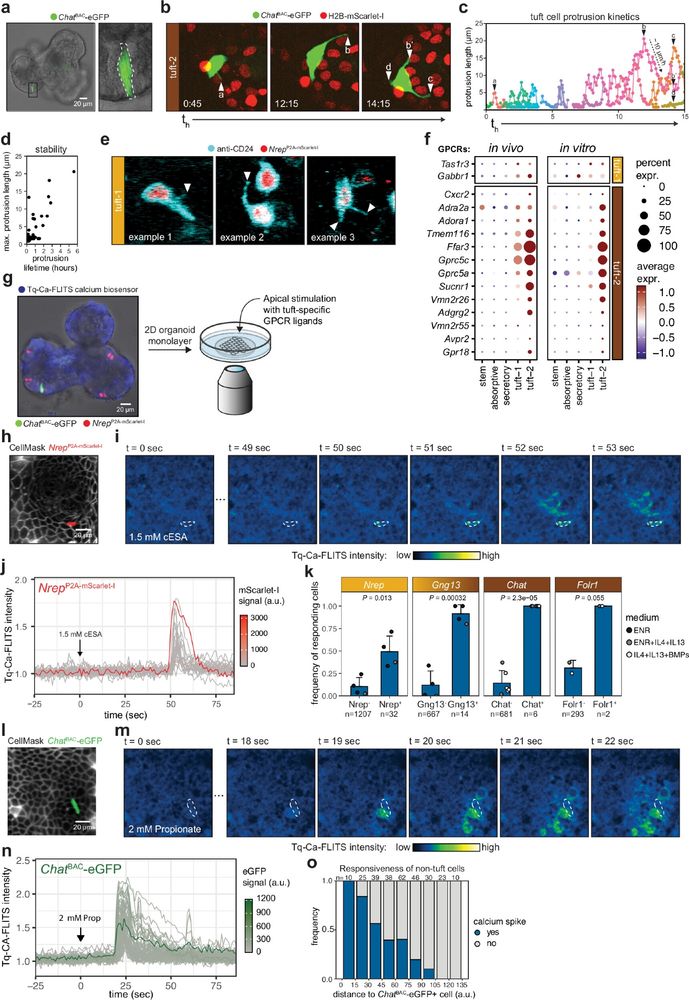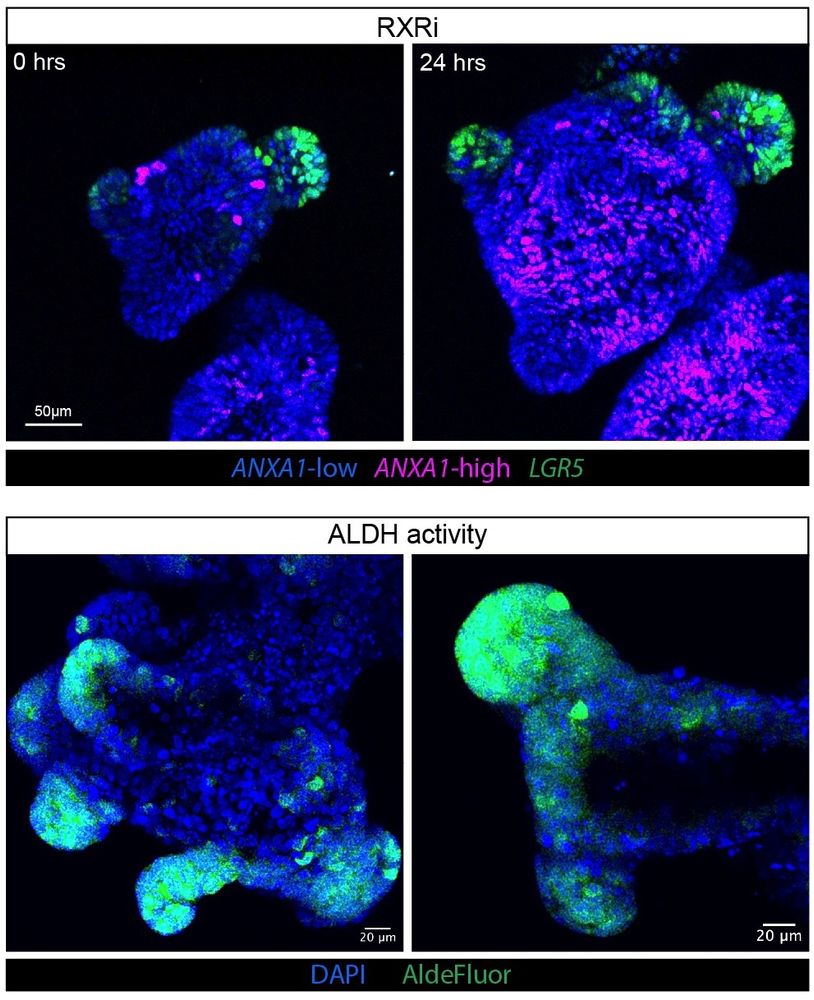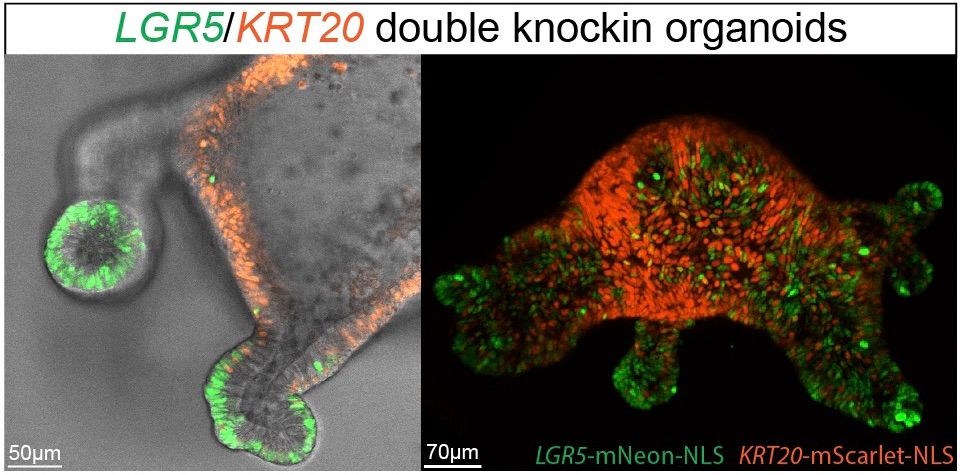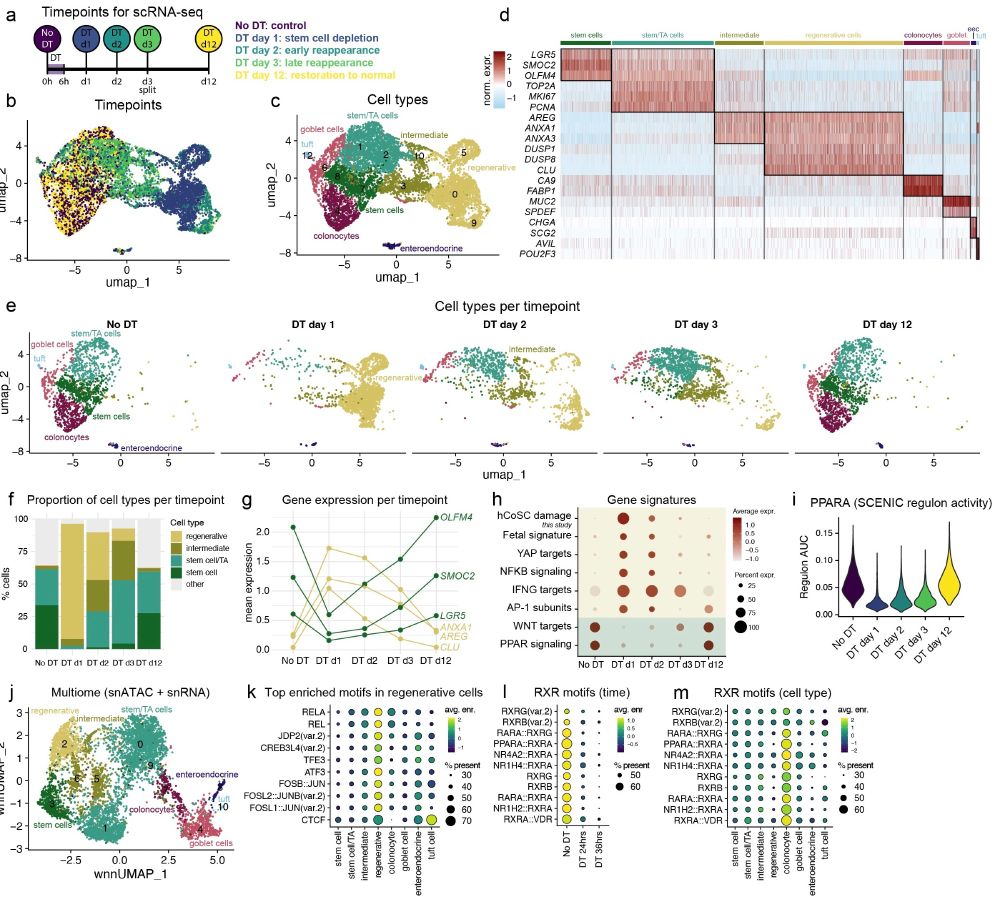Snippert lab
@hugosnippert.bsky.social
We use human organoid models to study the emergence and transformation of early-stage colorectal cancer.
We aim to prevent rather than cure.
Research lab at Prinses Maxima Center (formerly at UMC Utrecht) & Oncode Institute
We aim to prevent rather than cure.
Research lab at Prinses Maxima Center (formerly at UMC Utrecht) & Oncode Institute
5/ Our tuft subtype-specific reporters and optimized differentiation strategy in organoids provide an experimental platform to study immune-related tuft cell subtypes and their unique cell biological properties, like signal perception, processing and transmission to trigger immune defense.

July 23, 2025 at 7:09 PM
5/ Our tuft subtype-specific reporters and optimized differentiation strategy in organoids provide an experimental platform to study immune-related tuft cell subtypes and their unique cell biological properties, like signal perception, processing and transmission to trigger immune defense.
3/ Organoids with subtype-specific reporter knock-ins show that known tuft types in fact reflect successive maturation stages within the tuft lineage. Be aware 😱, commonly applied organoid treatment with IL-4 and 13 does lead to increased tuft numbers, but solely generates early tuft-1 states 🙅❌

July 23, 2025 at 7:09 PM
3/ Organoids with subtype-specific reporter knock-ins show that known tuft types in fact reflect successive maturation stages within the tuft lineage. Be aware 😱, commonly applied organoid treatment with IL-4 and 13 does lead to increased tuft numbers, but solely generates early tuft-1 states 🙅❌
🔊 Paper alert
1/ Tuft cells are perhaps the coolest cells in our gut orchestrating host defense, but how do they manage? @julian-buissant.bsky.social provides new insights into tuft cell differentiation, and the development of accurate in vitro models for experimental cell biology 🧫🔬🧬
rdcu.be/exou9
1/ Tuft cells are perhaps the coolest cells in our gut orchestrating host defense, but how do they manage? @julian-buissant.bsky.social provides new insights into tuft cell differentiation, and the development of accurate in vitro models for experimental cell biology 🧫🔬🧬
rdcu.be/exou9

July 23, 2025 at 7:09 PM
🔊 Paper alert
1/ Tuft cells are perhaps the coolest cells in our gut orchestrating host defense, but how do they manage? @julian-buissant.bsky.social provides new insights into tuft cell differentiation, and the development of accurate in vitro models for experimental cell biology 🧫🔬🧬
rdcu.be/exou9
1/ Tuft cells are perhaps the coolest cells in our gut orchestrating host defense, but how do they manage? @julian-buissant.bsky.social provides new insights into tuft cell differentiation, and the development of accurate in vitro models for experimental cell biology 🧫🔬🧬
rdcu.be/exou9
7/ Under homeostatic conditions, RXR is activated in colonocytes by RA produced by ALDH in stem cell compartments. But when the RA signal is lost (via stem cell loss or RXR inhibition), cells switch to an ANXA1-high regenerative state (visualized by independent ANXA1-RFP knock-in)

July 16, 2025 at 7:37 PM
7/ Under homeostatic conditions, RXR is activated in colonocytes by RA produced by ALDH in stem cell compartments. But when the RA signal is lost (via stem cell loss or RXR inhibition), cells switch to an ANXA1-high regenerative state (visualized by independent ANXA1-RFP knock-in)
6/ scRNA-seq and sc-multiome at high temporal resolution showed that predominantly surviving colonocytes first adopt a regenerative state marked by high ANXA1, before giving rise to new stem cells.

July 16, 2025 at 7:37 PM
6/ scRNA-seq and sc-multiome at high temporal resolution showed that predominantly surviving colonocytes first adopt a regenerative state marked by high ANXA1, before giving rise to new stem cells.
5/ Stem cell depletion triggered an unbiased and fast response with surviving cells quickly regenerating the LGR5+ stem cell pool. (normal organoids carrying 2 knock-ins: LGR5-GFP-DTR x KRT20-RFP-iCasp9)
July 16, 2025 at 7:37 PM
5/ Stem cell depletion triggered an unbiased and fast response with surviving cells quickly regenerating the LGR5+ stem cell pool. (normal organoids carrying 2 knock-ins: LGR5-GFP-DTR x KRT20-RFP-iCasp9)
4/ Next, knock-in of the Diphtheria Toxin Receptor into the LGR5 locus enabled selective stem cell ablation under normal conditions. Killing was robust, consistent and independent of low expression levels common to typical cell type markers (unlike inducible iCasp9)

July 16, 2025 at 7:37 PM
4/ Next, knock-in of the Diphtheria Toxin Receptor into the LGR5 locus enabled selective stem cell ablation under normal conditions. Killing was robust, consistent and independent of low expression levels common to typical cell type markers (unlike inducible iCasp9)
📢 New preprint 🔥
1/ Stem cell regeneration is often viewed as an actively induced process, triggered by damage. But what if plasticity is actively suppressed by the stem cells themselves? We explored plasticity with 'new' cell type ablation tech in normal human colon organoids
tinyurl.com/3ky4ccxf
1/ Stem cell regeneration is often viewed as an actively induced process, triggered by damage. But what if plasticity is actively suppressed by the stem cells themselves? We explored plasticity with 'new' cell type ablation tech in normal human colon organoids
tinyurl.com/3ky4ccxf

July 16, 2025 at 7:37 PM
📢 New preprint 🔥
1/ Stem cell regeneration is often viewed as an actively induced process, triggered by damage. But what if plasticity is actively suppressed by the stem cells themselves? We explored plasticity with 'new' cell type ablation tech in normal human colon organoids
tinyurl.com/3ky4ccxf
1/ Stem cell regeneration is often viewed as an actively induced process, triggered by damage. But what if plasticity is actively suppressed by the stem cells themselves? We explored plasticity with 'new' cell type ablation tech in normal human colon organoids
tinyurl.com/3ky4ccxf

